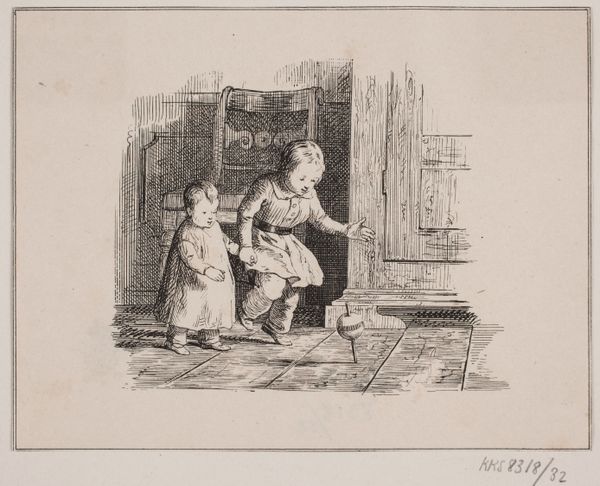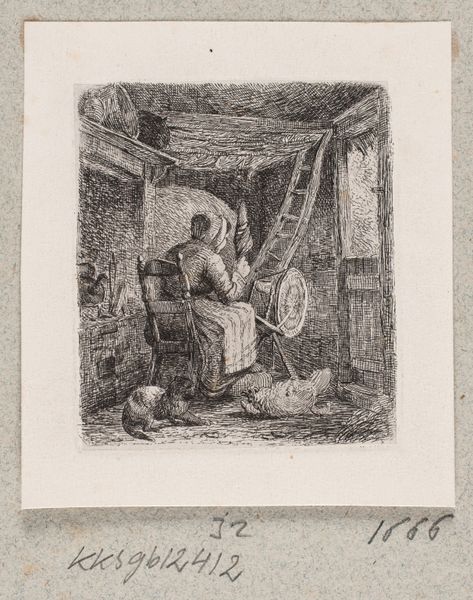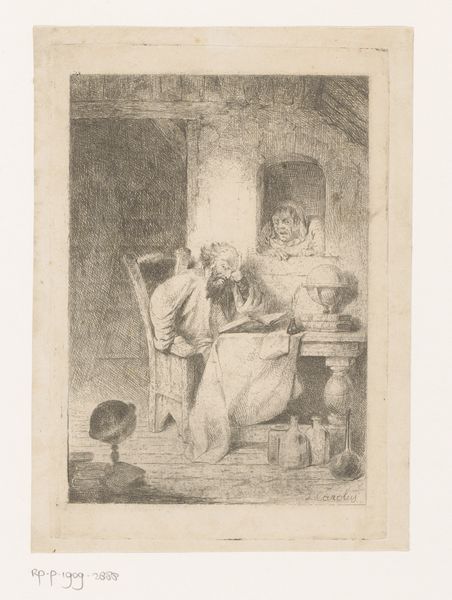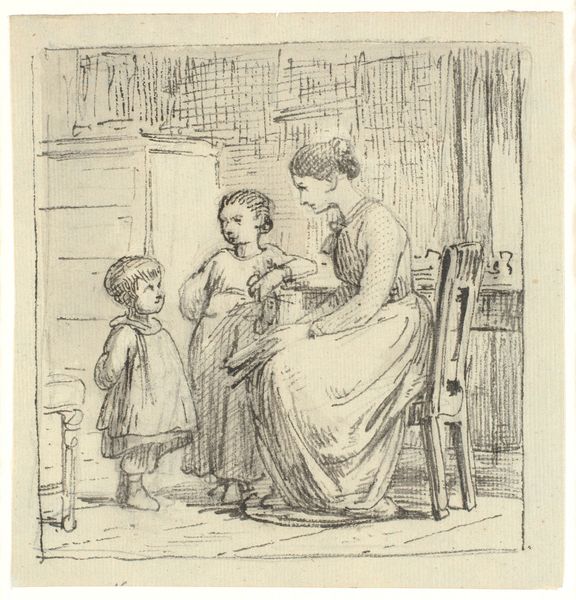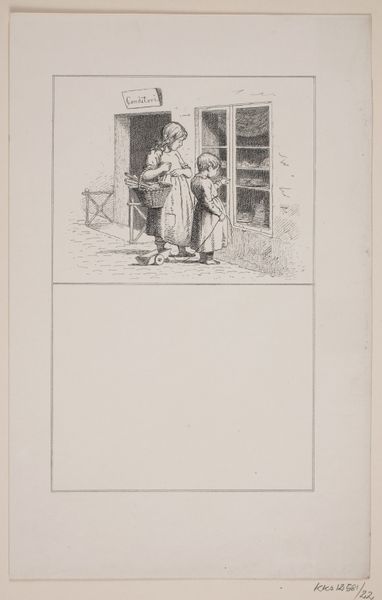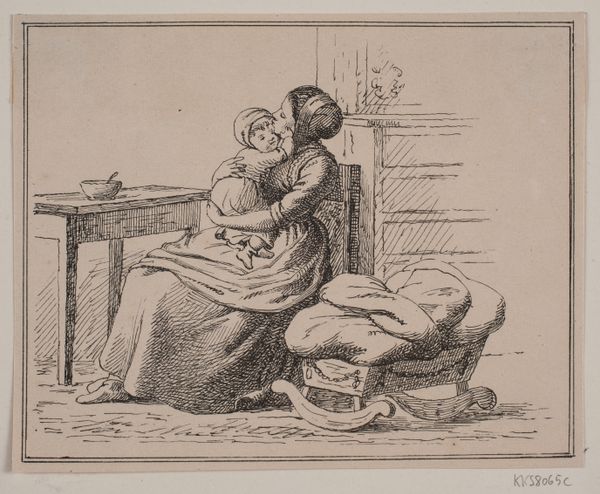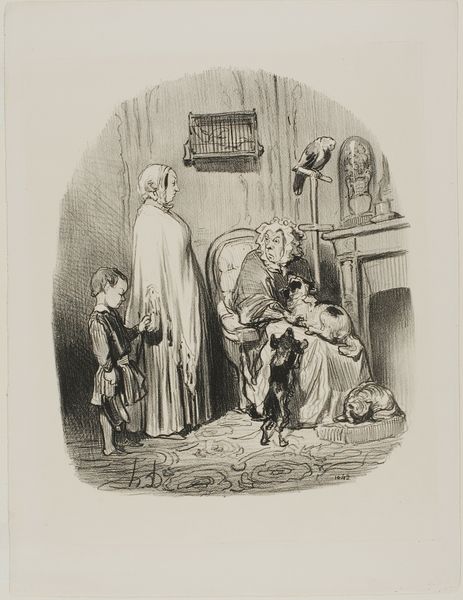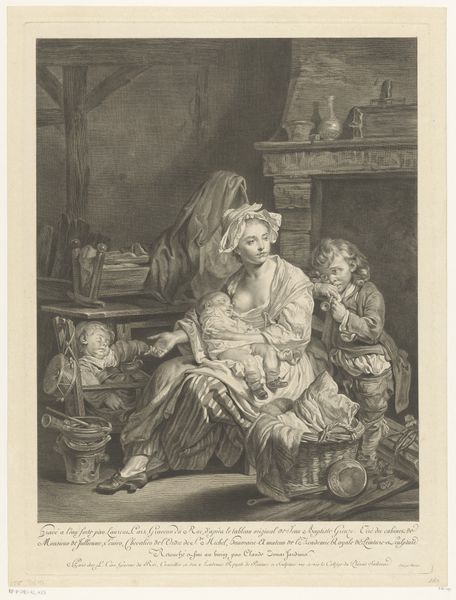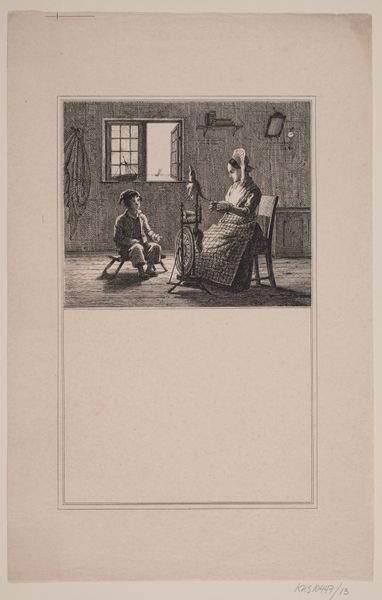
Illustration til "De sidste timer", digt af H. J. Greensteen 1875
0:00
0:00
drawing, print, etching
#
portrait
#
drawing
#
narrative-art
# print
#
etching
#
genre-painting
Dimensions: 115 mm (height) x 71 mm (width) (bladmaal)
Curator: The intimacy in this etching is so compelling. "Illustration til 'De sidste timer', digt af H. J. Greensteen," dating from 1875, attributed to artist F. Hendriksen, depicts what looks to be a tender moment between grandmother and grandchild. Editor: Yes, there is something melancholic in its tenderness, though. The stark contrasts created through the etching process enhance the somber atmosphere of the image, despite the seemingly warm interaction depicted. Curator: I think that solemnity resonates deeply. Images of elders passing down wisdom are encoded with the awareness of mortality, the ephemeral nature of memory, of stories themselves. Even the very old-fashionedness carries a symbolic weight. The spinning wheel and traditional dress tell us about domestic life. Editor: Right, the spinning wheel immediately speaks to notions of women’s work. Though such visual motifs are rife with complicated meanings related to both gender and labor, this does look very traditional and almost nostalgic. This feels rooted in a time where patriarchal family structures defined relationships, and those at the margins - children and old women, for example - could have important social positions within that framework. Curator: The generational narrative strikes me most. I wonder, given it's an illustration for poetry, if there is a further story we can extract? We have the book in their hands and faces filled with emotions, they almost look like actors in some larger, ancestral narrative, both its heroes and its keepers. Editor: The very scale contributes to the narrative impact, too. Its compact form allows the viewer to become intimately involved, reflecting on family bonds and dynamics within what is undoubtedly a restricted, domestic arena. Curator: Indeed, it allows for very accessible meaning. An image, a feeling to be understood across time and contexts. Editor: I find myself questioning the idea of its inherent universality. While intergenerational connections remain vital, the very specific socio-economic position of those in this image, situated in a relatively comfortable, domestic sphere, creates distance from many who may view the art today. We see, yet it might only be one truth amongst others. Curator: Fair enough. For me it’s ultimately that link with cultural memory that feels important. These visual languages help us access stories and emotions tied to the past, continuing the cyclical human narrative through image and symbol. Editor: Perhaps that’s a fine place to conclude. I will consider again how those universal narratives have to keep evolving.
Comments
No comments
Be the first to comment and join the conversation on the ultimate creative platform.


